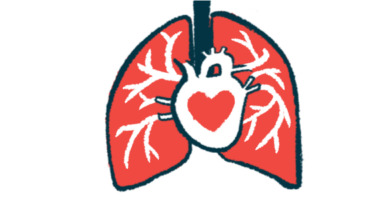Balloon pulmonary angioplasty benefits CTEPH patients: Study
Procedure has emerged as an alternative treatment approach

Balloon pulmonary angioplasty (BPA) led to significant clinical improvements for people with chronic thromboembolic pulmonary hypertension (CTEPH) when used as an initial therapy or after a pulmonary endarterectomy (PEA) surgery, according to a global observational study.
“Our data are in line with previous reports on changes of clinical and hemodynamic [blood flow] parameters and complication rates of BPA,” researchers wrote.
The study, “Balloon Pulmonary Angioplasty for Chronic Thromboembolic Pulmonary Hypertension: Results of an International Multicenter Prospective Registry,” was published in the Journal of the American College of Cardiology.
Benefits of balloon pulmonary angioplasty therapy seen across regions
CTEPH is a rare form of pulmonary hypertension (PH) characterized by elevated pressure in the pulmonary arteries, the blood vessels responsible for carrying blood through the lungs, due to the presence of blood clots that restrict blood flow.
The standard treatment approach is PEA, a complex surgical procedure where these blood clots are removed. However, many people with CTEPH are not eligible for this surgery due to factors such as coexisting health conditions, limited access to surgery, or disease that is technically inoperable.
BPA has emerged as an alternative treatment approach for such patients. This minimally invasive procedure involves temporarily inflating a small balloon in a blood vessel to help widen it and improve blood flow. It usually involves repeated treatment sessions.
While studies have demonstrated the safety and efficacy of BPA in people with CTEPH, worldwide data are lacking. To address that, the International CTEPH Association launched an observational study called the International BPA Registry (NCT03245268).
It enrolled 500 people scheduled to undergo BPA across 18 specialized centers worldwide, most of whom had CTEPH. A small number had blood clots in the lungs without PH.
The final analysis, detailed in the recent publication, concerned 484 participants who underwent a median of five BPA sessions. The main indication for BPA was technically inoperable CTEPH (70.7%). Nearly 14% of participants had previously undergone PEA.
Various regional differences were observed in patient characteristics and procedural approaches.
Still, benefits of BPA therapy could be observed across geographical areas, including significant improvements in functional and exercise capacity, as well as reductions in breathlessness and heart disease biomarkers.
Improvements observed in blood flow, circulation
Hemodynamic parameters, or those related to blood flow and circulation, were measured a median of about six months after the last BPA and also showed improvements. That included significant reductions in median pulmonary artery pressure and pulmonary vascular resistance (PVR), an indicator of how hard the heart has to work to pump blood through the lungs.
Greater PVR reductions were observed in people who had at least five areas of damage treated, who had a higher initial pulmonary artery pressure, and who were treated at centers with more experience in BPA procedures.
In general, people who had previously undergone PEA experienced similar improvements as those who had not.
“These changes may translate into meaningful practical clinical benefits such as improved patient-reported quality of life, less hospitalizations, less oxygen use, and less PH medications,” the researchers wrote.
About a third of patients experienced BPA-related complications, with lower rates occurring in Japan than in the U.S. or Europe. The researchers noted that a variety of procedural and patient-related differences could contribute to that observation.
These changes may translate into meaningful practical clinical benefits such as improved patient-reported quality of life, less hospitalizations, less oxygen use, and less PH medications.
Chest-related complications, including lung injury and coughing up blood, occurred in 9% of BPA sessions. Factors linked to these complications included a high PVR, being female, living in a region outside Japan, and PH medications.
Other types of complications, such as issues with accessing the affected site or reactions to the procedure materials, occurred in 3% of sessions.
Throughout follow-up, 21 people died, with seven deaths related to PH. No person died within a month of undergoing BPA.
In terms of study limitations, the scientists noted that a role for PH medications in the observed improvements cannot be ruled out.
“In light of the variation observed in the use of medication after BPA, future research to elucidate optimal medication management strategies should be supported, because clear recommendations are currently not available,” the team concluded.
The BPA registry was supported by funding from Bayer.









